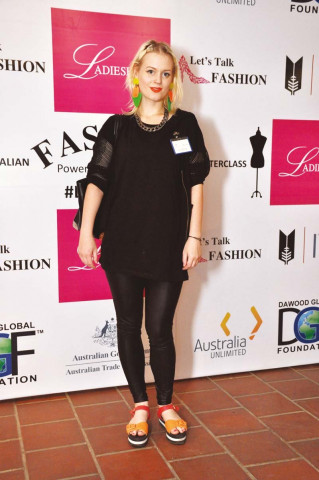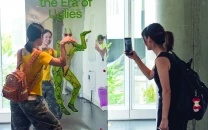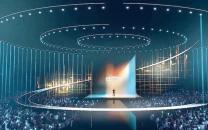Australian trainer Heidi Philips says Pakistan can become global player in design
Philips had arrived at IVS, Karachi for a fashion masterclass

Philips praised the Pakistani way of promoting fashion and textile houses through billboards around the cities, a USP unknown to Australians. PHOTO: PUBLICITY
Getting global recognition is a significant step forward for any fashion designer. And, according to Australian trainer Heidi Phillips, Pakistan can become a global player in the market too. To help aspiring and existing designers expand their horizons, Phillips conducted an ‘Australian Fashion Master Class’ on Wednesday, shedding light on different aspects of the fashion world.
The session – organised by the Australian High Commission and held at Karachi’s Indus Valley School of Arts and Architecture (IVS) – saw the Melbourne native share her thoughts on how Pakistani designers can tweak their work in order to appeal to Australian clients. The interactive workshop was powered by LadiesFund and full of fashion enthusiasts from across the city, including students, journalists and renowned local designers.
New facility: IVS inaugurates Marium Abdulla Library

Philips stressed upon four key aspects that can make Pakistan a global player in the world of fashion. “Firstly, you should know your customer base and must have done your market research,” she said. “Secondly, follow the global trend-forecast. Thirdly, try to build your image via social media and finally, advertise it remarkably well through social websites. Understand that being online is the reality of the day.” She also advised the designers present on how they could sell their luxury pret and bridal collections in Australia.
According to Philips, having a complete understanding of your customer’s choices is essential, as is being able to forecast trends which can help boost sales. “All you need to do is translate your trends into their styles. Western fashion leaders often get inspired from other cultures. Similarly, a designer from Pakistan can also completely capitalise on this too,” said Philips. Using the example of three-piece lawn suits which are definitely a huge grosser in Pakistan, Philips explained why they would never work in Australia. “There is a great difference in the colours used. While Pakistanis love to dress up in bright shades, Australians prefer dull ones. Besides, Australians also favour jerseys and knits, whereas Pakistanis do not.”
Art for art’s sake: Spaces and places through a camera lens
Philips went on to praise Pakistan’s way of promoting fashion and textile houses through billboards all around the city – a USP unknown to Australians. She, however, remained insistent upon the use of internet platforms to gain recognition. “If you want to be on top of your game, publicise your creative work through social media, photo-shoots and look-books. Going online has changed the market drastically and small enterprises need to excel in it to get ahead.”
Concurring with Philips, Australian High Commissioner Margaret Adamson – who was also present at the event – revealed how the fashion industry in Pakistan contributes greatly to the country’s economic development. “The Pakistani fashion and textile industries are important contributors to Pakistan’s economic growth and can certainly promote a contemporary and vibrant image of Pakistan around the world.”
Karsaz Flyover getting a makeover
In conclusion, there were plenty of interesting insights shared with the class but an absence of queries on part of the attendees could be indicative of little interest.
Published in The Express Tribune, February 27th, 2016.
Like Life & Style on Facebook, follow @ETLifeandStyle on Twitter for the latest in fashion, gossip and entertainment.



















COMMENTS
Comments are moderated and generally will be posted if they are on-topic and not abusive.
For more information, please see our Comments FAQ